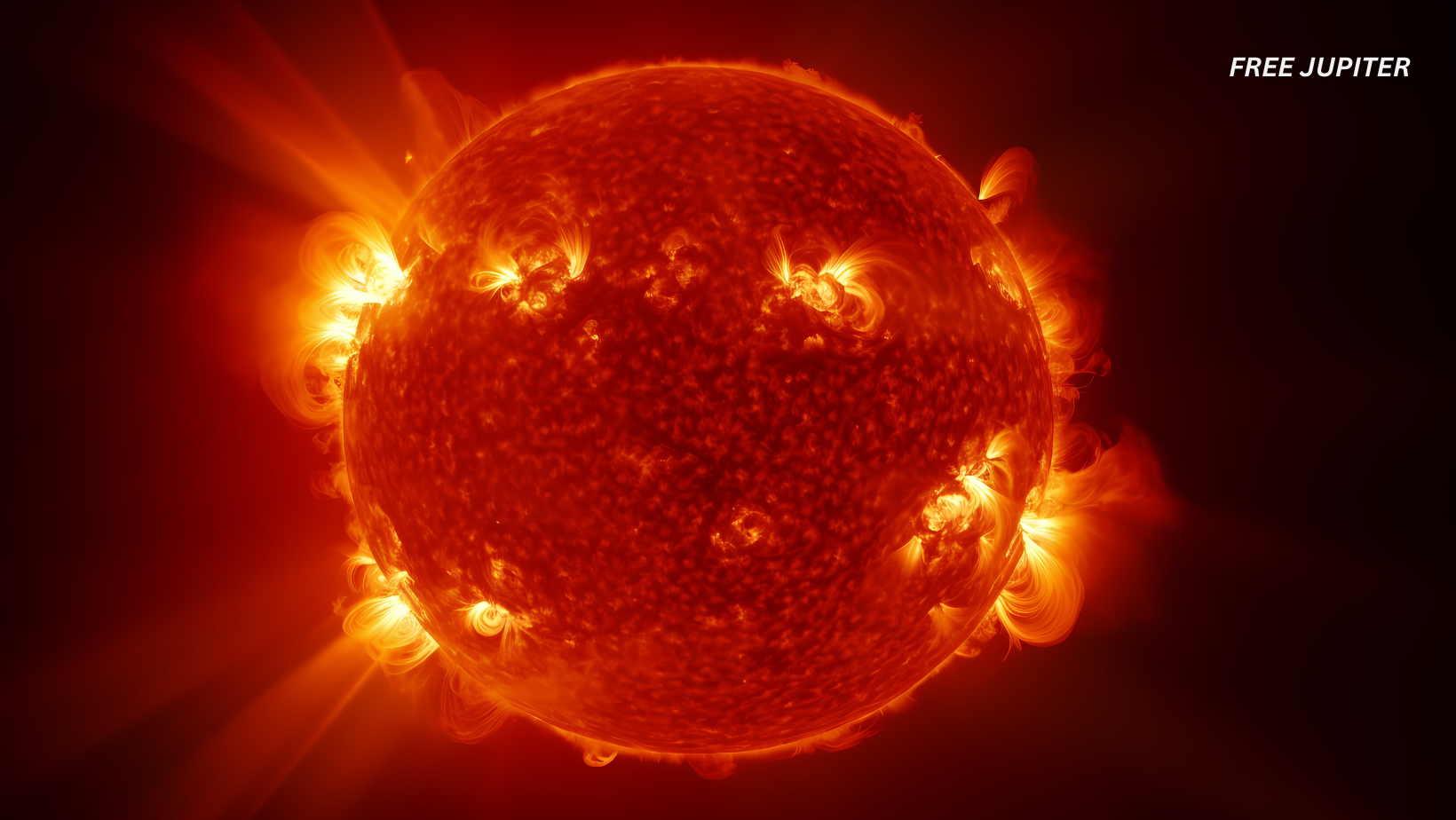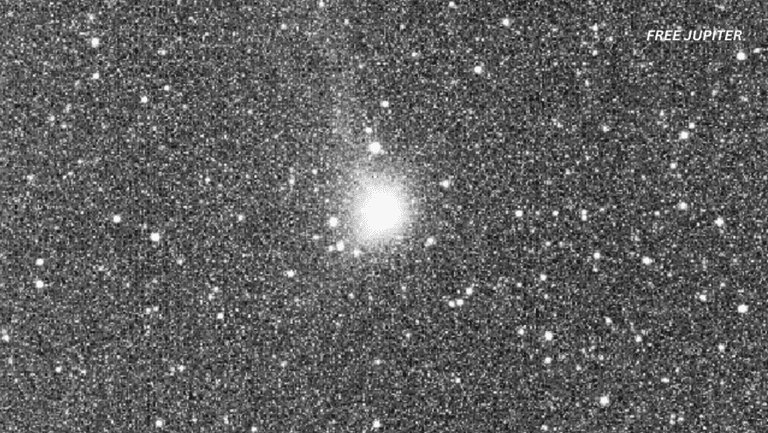Friendly Note: FreeJupiter.com shares general info for curious minds 🌟 Please fact-check all claims—and always check health matters with a professional 💙
In an unprecedented achievement, the European Space Agency’s Solar Orbiter spacecraft has provided humanity with its first-ever detailed images of the sun’s south pole, opening a new chapter in solar exploration.
This milestone was announced in June 2025, based on observations made in March of the same year, marking a significant leap forward in our understanding of our closest star’s complex behavior.
A New Perspective on Our Star
For decades, solar scientists have studied the sun’s surface and atmosphere, but the poles remained elusive due to the limitations of spacecraft orbits and Earth-based observations. Until now, all solar images were captured from near the solar equator, as planets—including Earth—orbit the sun within a relatively flat plane called the ecliptic. This orbital alignment meant that spacecraft typically followed similar paths, restricting their views to the sun’s equatorial regions.
The Solar Orbiter, launched in early 2020 by the European Space Agency in collaboration with NASA, was designed to break this mold. By performing gravity-assisted flybys of Venus, the spacecraft gradually tilted its orbital plane, enabling it to peer over the sun’s equator and capture views from higher latitudes. In March 2025, the probe achieved an angle of approximately 17 degrees below the solar equator, allowing it to directly image the sun’s south pole for the very first time.
Revealing a Chaotic Magnetic Landscape
The images returned by Solar Orbiter reveal a surprisingly turbulent and intricate magnetic environment at the sun’s south pole. Unlike the more orderly magnetic fields observed at lower latitudes, this polar region exhibits a tangled mix of magnetic polarities—both north and south—coexisting in a chaotic pattern. This magnetic complexity is characteristic of the sun’s current solar maximum phase, the peak of its approximately 11-year activity cycle when solar flares and storms are most frequent and intense.
During the solar maximum, the sun’s magnetic poles undergo a reversal, with the south pole eventually becoming the new magnetic north. The Solar Orbiter’s observations suggest that the current period of mixed magnetic polarities at the south pole is a transient phase that will soon give way to a dominant polarity as the sun progresses toward its quieter solar minimum phase.
Read more: James Webb Confirms There’s Something Seriously Wrong With Our Understanding Of The Universe
Why This Matters
Understanding the sun’s magnetic field, especially at its poles, is crucial for several reasons. The sun’s magnetic activity drives space weather phenomena, including solar flares and coronal mass ejections, which can disrupt satellite operations, power grids, and communications on Earth.
By studying the polar magnetic fields, scientists hope to gain insight into the mechanisms behind the solar cycle and improve predictions of solar activity and its terrestrial impacts.
Carole Mundell, ESA’s Director of Science, emphasized the importance of these findings: “The sun is our nearest star, giver of life and potential disruptor of modern space and ground power systems, so it is imperative that we understand how it works and learn to predict its behaviour. These new unique views from our Solar Orbiter mission are the beginning of a new era of solar science”.
The Instruments Behind the Discovery
Solar Orbiter is equipped with a suite of sophisticated instruments designed to study the sun in multiple wavelengths and particle energies.
Among these, three cameras played a key role in capturing the south pole images, including those sensitive to visible light, ultraviolet radiation, and emissions from ionized gases at various temperatures.
This multi-spectral approach allows scientists to examine different layers of the sun’s atmosphere, from the photosphere to the corona—the outermost layer where the solar wind originates.
The spacecraft’s Polarimetric and Helioseismic Imager (PHI) instrument, led by scientists at the Max Planck Institute for Solar System Research, is particularly vital. It maps the sun’s surface magnetic field, providing detailed information about the magnetic polarity and strength at the poles.
Sami Solanki, director at the Max Planck Institute and lead scientist for PHI, remarked on the significance of the timing: “Solar Orbiter has reached high latitudes at just the right time to follow the whole process from its unique and advantageous perspective”.
Read more: What Quantum Entanglement Really Reveals About the Universe
A Journey Beyond the Ecliptic
The Solar Orbiter’s path through the solar system is a testament to clever engineering and celestial mechanics. By leveraging Venus flybys, the spacecraft incrementally increased its orbital inclination, allowing it to step outside the usual observational plane.
This maneuver is what enabled the probe to capture the sun’s poles in unprecedented detail—something no previous mission had managed.
While the Ulysses mission in the 1990s did fly over the sun’s poles, it lacked imaging instruments, focusing instead on measuring solar wind and magnetic fields. Solar Orbiter combines the ability to image the sun with in situ measurements, offering a more comprehensive picture of solar dynamics.
Looking Ahead: More to Discover
The images released so far represent only the beginning. As Solar Orbiter continues its mission, its orbit will tilt further, providing even clearer and more extensive views of both the south and north poles. This progression promises to deepen our understanding of the sun’s magnetic field evolution, solar wind origins, and the drivers of solar activity cycles.
Daniel Müller, ESA’s Solar Orbiter project scientist, expressed optimism about the mission’s future contributions: “These data will transform our understanding of the sun’s magnetic field, the solar wind, and solar activity”.
The Broader Context of Solar Exploration
The Solar Orbiter’s breakthrough comes amid a surge of solar research missions. NASA’s Parker Solar Probe has been diving closer to the sun than any spacecraft before, studying its outer atmosphere and solar wind.
Other missions, such as NASA’s PUNCH constellation and ESA’s twin satellites designed to create artificial solar eclipses, complement these efforts by exploring different aspects of solar phenomena.
Together, these missions form a coordinated effort to unravel the sun’s mysteries, enhancing our ability to forecast space weather and safeguard technology-dependent societies on Earth.
Summary
The Solar Orbiter’s historic images of the sun’s south pole mark a pivotal moment in space science, revealing a previously unseen magnetic chaos at our star’s polar region.
By venturing beyond the ecliptic plane, the spacecraft has opened a new window into solar dynamics, particularly the processes governing the sun’s magnetic cycle and its effects on the solar system.
As the mission progresses, it promises to shed light on fundamental questions about the sun’s behavior, helping humanity better anticipate and respond to the sun’s influence on our technological world.










